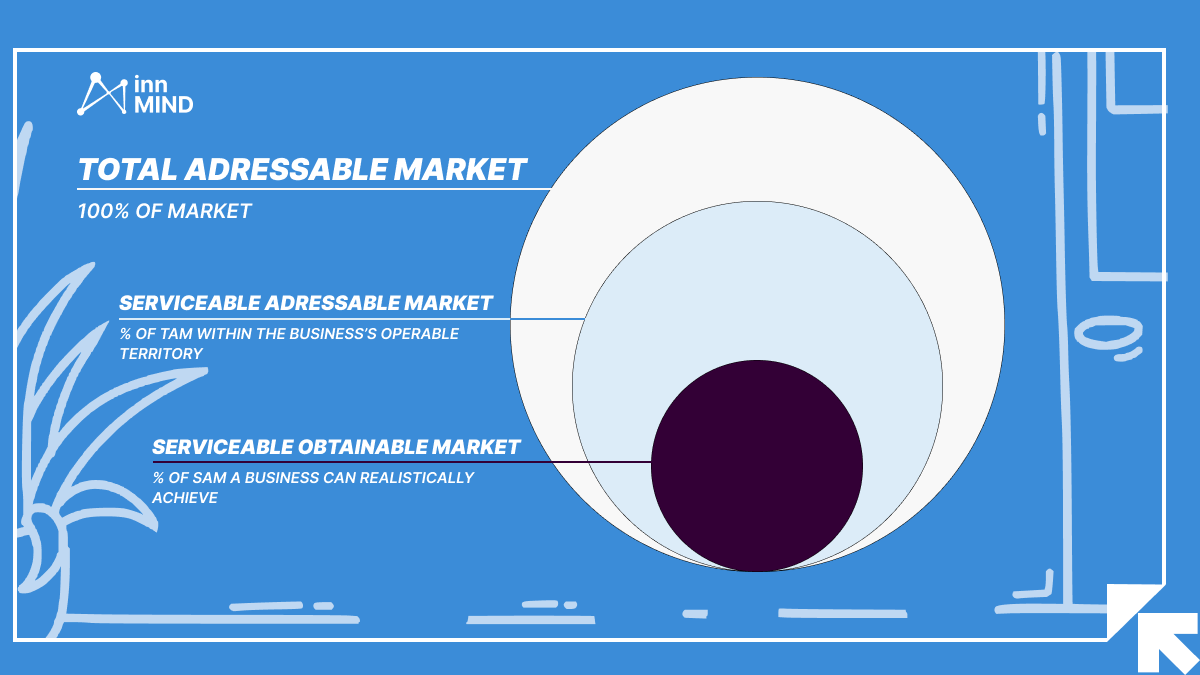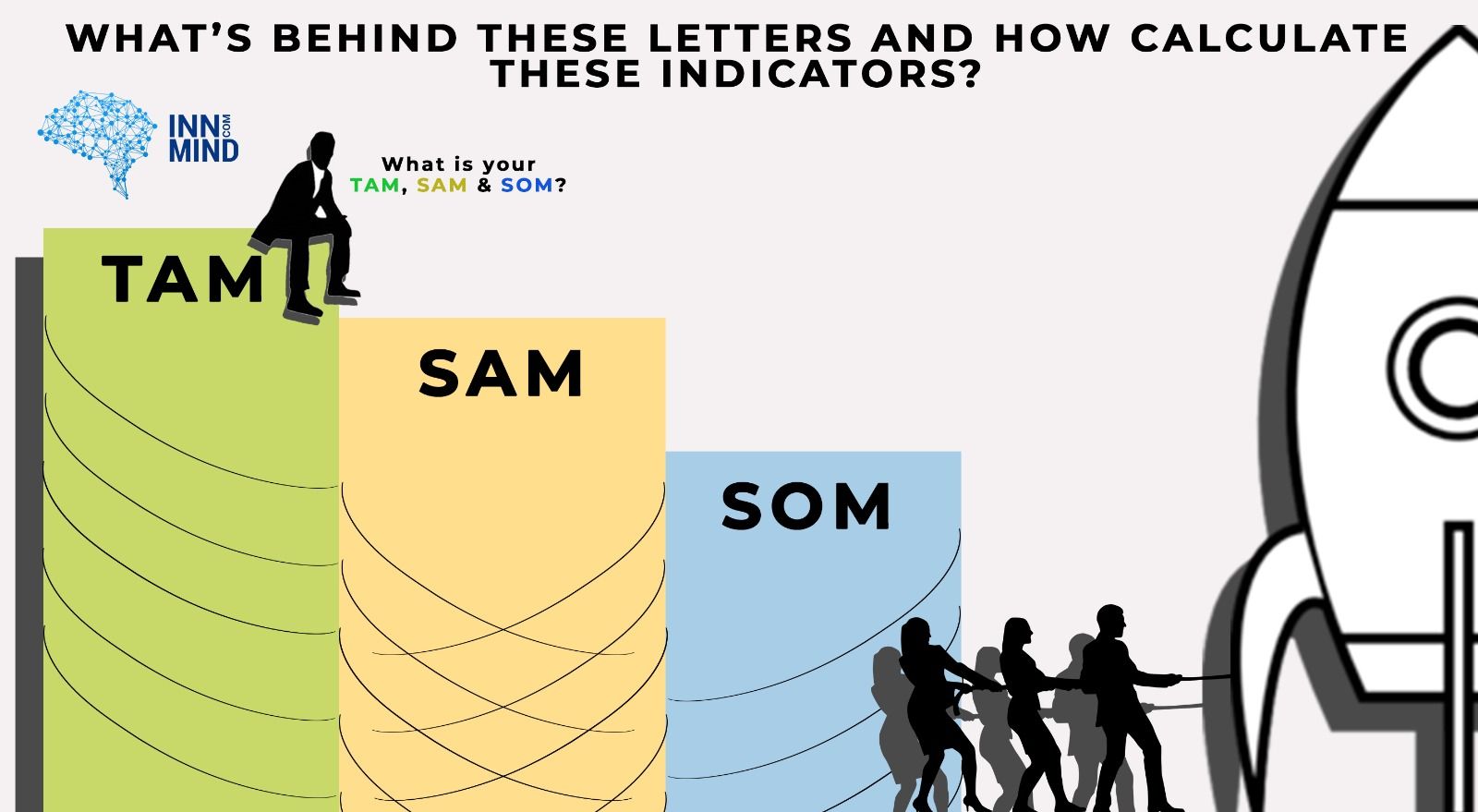TAM vs SAM vs SOM
Here we address the basics of what is tam, sam, and som. We will explain what’s behind these letters and how to calculate these metrics.
If you have ever presented your startup to an investor, you probably came across the question "What’s your TAM? SAM? SOM?" and the following question "How to calculate TAM, SAM and SOM?". It’s pretty hard to answer on the spot – you should know your target market’s structure and the productive capacity of your startup in detail.
The purpose of this article – to make clear once and for all what these indicators mean and how to calculate them.
Before we start, subscribe to InnMind special web3 digest: every week, we curate a special email packed with useful tools, market insights, and exclusive opportunities tailored for founders and investors. Take a moment to subscribe to our weekly web3 digest.
What is TAM (Total Addressable Market)
It is the total market demand for a product or a service. When calculating TAM you don’t take into account competition, geography, demographics. Of course, everything goes better with examples.
- You sell tea. Your TAM – global tea market size in $ (all tea, sold in all countries to anybody)
- Your product is software for e-shops. Your TAM – revenue of all companies that was generated by selling e-commerce software in $
- You want to open a supermarket chain. Your TAM – revenue of all supermarkets in the world in $.
How do you identify a TAM?
To calculate your TAM you can research in the internet and find sizes of different markets in open sources. For example, alliedmarketresearch.com, statista.com or any other reliable source. Don’t forget to indicate where the data was taken from.
SAM (Serviceable Available Market)
It is the part of the total addressable market that can be acquired. Here you should consider geographical and demographic issues. Will your product/service be available only in your city/country or not? Who are your target customers – young people 18-30 yrs or, maybe, people aged 25-50 whose incomes are above middle?
- Tea. If you are going to sell tea e.g. only in EU, your SAM is EU tea market size in $.
- Software. Will your software fit all e-shops? Or only clothes/furniture/accessories e-shops? Will your software be useful for all e-shops or only for ones with big trade turnover? Deal with such questions and define SAM on the basis of your calculations.
- Supermarket. Are you going to open high-end supermarkets only in New York? Your SAM – part of TAM that goes to this type of NY supermarkets.
How to calculate SAM?
To calculate SAM use open data taking into account geographical and demographic issues or conduct your own market research. For example, how many tea bags do you think a regular person and how often buys per year? Multiply that by the number of people in the EU, and then by the average cost of a single tea bag.
SOM (Serviceable Obtainable Market)
It is the part of your SAM that your business model can currently realistically serve. Now your productive capacity, the situation on the target market and other current issues come to play. SOM (also known as Share of Market) is usually calculated for year three or/and year five (what market share will I obtain in 3 years? In 5 years?)
- Tea. You probably can’t provide all the EU with tea from the first day. First of all, you don’t have enough tea, employees, factories. Second, there are other competitors. Calculate SOM on the basis of your marketing strategy (what market share will you be able to obtain by year ....?) and your productive capacity (how much tea will you be able to produce and later sell?)
- Software. The situation is the same. What will your approximate market share be in 3 years?
- Supermarket. There is no doubt that the most loyal customers will be the people that live in the vicinity. NY is a very big city with a lot of supermarkets, so if you open less than 10 supermarkets, SOM will hardly be at least 1% of SAM
How to calculate SOM?
In general, to calculate SOM correctly, you should have a clear market strategy and know your target market pretty well. In nutshell to calculate SOM, divide last year's revenue by last year's SAM – this is your market share. Now multiply your dollar value of market share by the dollar value of SAM current year. You can repeat the excercise for the projection purposes.
Recap of TAM, SAM and SOM
The TAM is a great metric to identify the potential of a target market, while SAM and SOM is helping to see realistic and actionable perspective. It's important to collect data from as many reliable sources as possible; these sources include reports and analytics, publications as well as government records. One more option of course is surveys, which are a useful way to research potential market.

What might be a good enough and attractive TAM for startups and investors?
The most important indicator of success for startups is their potential. If a startup has a high enough reach, they are much more likely to compete successfully in the market.
Many founders are asking what TAM is suitable for startups. Example: your potential customer can buy a tea bag subscription that costs $100 a year, and you have 100,000 customers. The TAM this generates is $10M annually - way not too bad if you think about it! You should target a TAM between $10 and $100M for your entry market.
Why are these metrics so important?
The potential value of your startup in several years and return on investment are calculated on the basis of TAM/SAM/SOM. Any savvy investor will ask you about these indicators; moreover, the figures should be backed up by a clear strategy, market research and data from reliable sources. Market analysis is a fundamental part of the business. It can give the business direction and raise money if there is enough potential.
Subscribe to InnMind
If you want to understand why investors pay much attention to and how to calculate these metrics correctly, register your startup profile on InnMind and get support from a team of experts. And try a free startup valuation calculator to estimate the fair value of your startup.
Website | Twitter | Telegram | VC Pitching Sessions | Youtube | LinkedIn
Related Topics:







